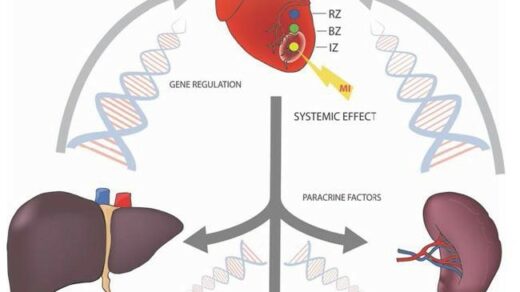“Lung cancer remains the leading cause of cancer-related fatalities in the United States and worldwide, with cigarette smoking the most well-established risk factor for lung cancer.“
Lung cancer, particularly non-small cell lung cancer (NSCLC), is the deadliest cancer worldwide. Cigarette smoking is one of the main causes, but not every smoker develops the disease. This suggests that other biological factors help determine who develops cancer.
Researchers from the Division of Pulmonary, Critical Care, Sleep and Occupational Medicine, Indianapolis, and from the Richard L. Roudebush Veterans Affairs Medical Center have now found that cigarette smoke, combined with a weakened DNA repair system, can trigger the early stages of lung cancer, particularly NSCLC. This work, led by first author Nawar Al Nasralla and corresponding author Catherine R. Sears, was recently published in Volume 16 of Oncotarget.
Understanding the Link Between Cigarette Smoke and DNA Repair
NSCLC develops through a mix of genetic and environmental factors, with tobacco smoke as a major driver. Cigarette smoke contains thousands of harmful chemicals, many of which can damage DNA in the cells covering the airways. The body has natural systems to repair DNA damage and keep cells healthy. For example, one key protein, Xeroderma Pigmentosum Group C (XPC), detects specific types of DNA damage and starts the repair process, helping to maintain cellular genetic stability.
When DNA repair does not work properly, damaged DNA can remain in cells. Over time, these alterations may accumulate and lead to uncontrolled cell growth, raising the risk of NSCLC, and other lung diseases, such as chronic obstructive pulmonary disease (COPD).
The Study: Investigating the Relation Between DNA Repair and Lung Cancer Development
In the paper “Cigarette smoke and decreased DNA repair by Xeroderma Pigmentosum Group C use a double hit mechanism for epithelial cell lung carcinogenesis,” the research team investigated how cigarette smoke affects DNA repair when XPC function is reduced and whether this combination accelerates lung disease and cancer development.
They studied both healthy lung cells and lung cancer cells to compare how each type reacted to cigarette smoke exposure. By analyzing these differences, the team aimed to better understand how weakened DNA repair systems might set the stage for NSCLC and other lung diseases.
The Results: XPC Reduction is Part of NSCLC Development
The study found major differences between healthy lung cells and lung cancer cells when DNA repair was compromised. In healthy bronchial cells, cigarette smoke reduced DNA repair ability, increased DNA damage, and caused more cell death. These effects became stronger when XPC levels were lower.
Lung cancer cells responded differently, showing greater resistance to cigarette smoke. They required higher exposure to cause similar DNA damage, and lowering XPC had little effect on their survival, suggesting they rely on other mechanisms to manage the damage.
The researchers also examined genomic instability—signs that DNA is becoming dangerously unstable. In healthy cells, reduced XPC made cigarette smoke damage more likely to produce micronuclei, small DNA fragments that indicate higher cancer risk. In lung cancer cells, lowering XPC did not significantly change these markers.
Finally, in human NSCLC tumor samples, both lung adenocarcinomas and squamous cell carcinomas had much lower XPC levels than nearby healthy tissue. This was true regardless of smoking history, indicating that XPC loss is part of tumor biology rather than simply a result of cigarette smoke.
The Breakthrough: A Double Hit Driving Lung Disease Development
The findings point to a dangerous partnership between cigarette smoke and weakened DNA repair. Cigarette smoke delivers the first hit by directly damaging DNA. Reduced XPC delivers the second hit by limiting the cell’s ability to repair that damage. Together, these effects allow genetic errors to accumulate, increasing the probability that lung cells become cancerous. This “double hit” mechanism may help explain why some smokers develop lung diseases while others do not.
The Impact: Lung Cancer Prevention and Care
Testing for DNA repair capacity, especially XPC levels, could help identify people at higher risk for lung cancer, even before symptoms appear. Such screening could guide targeted prevention strategies for smokers and previous smokers.
Future Perspectives and Conclusion
This research highlights the importance of protecting cells’ DNA repair systems, particularly XPC, to reduce lung cancer risk. The next step will be to understand why XPC levels drop in lung cells. Identifying and addressing the causes could lead to prevention strategies for people exposed to cigarette smoke, including those who have already quit but remain at risk. Preserving or restoring XPC function could be a therapeutic strategy to slow or even prevent the earliest stages of NSCLC caused by cigarette smoke.
Overall, when cigarette smoke and reduced DNA repair act together, they can cause severe damage to lung cells, increase genetic instability, and raise the chances of developing NSCLC.
Click here to read the full research paper in Oncotarget.
_______
Oncotarget is an open-access, peer-reviewed journal that has published primarily oncology-focused research papers since 2010. These papers are available to readers (at no cost and free of subscription barriers) in a continuous publishing format at Oncotarget.com.
Oncotarget is indexed and archived by PubMed/Medline, PubMed Central, Scopus, EMBASE, META (Chan Zuckerberg Initiative) (2018-2022), and Dimensions (Digital Science).
Click here to subscribe to Oncotarget publication updates.
For media inquiries, please contact media@impactjournals.com.



